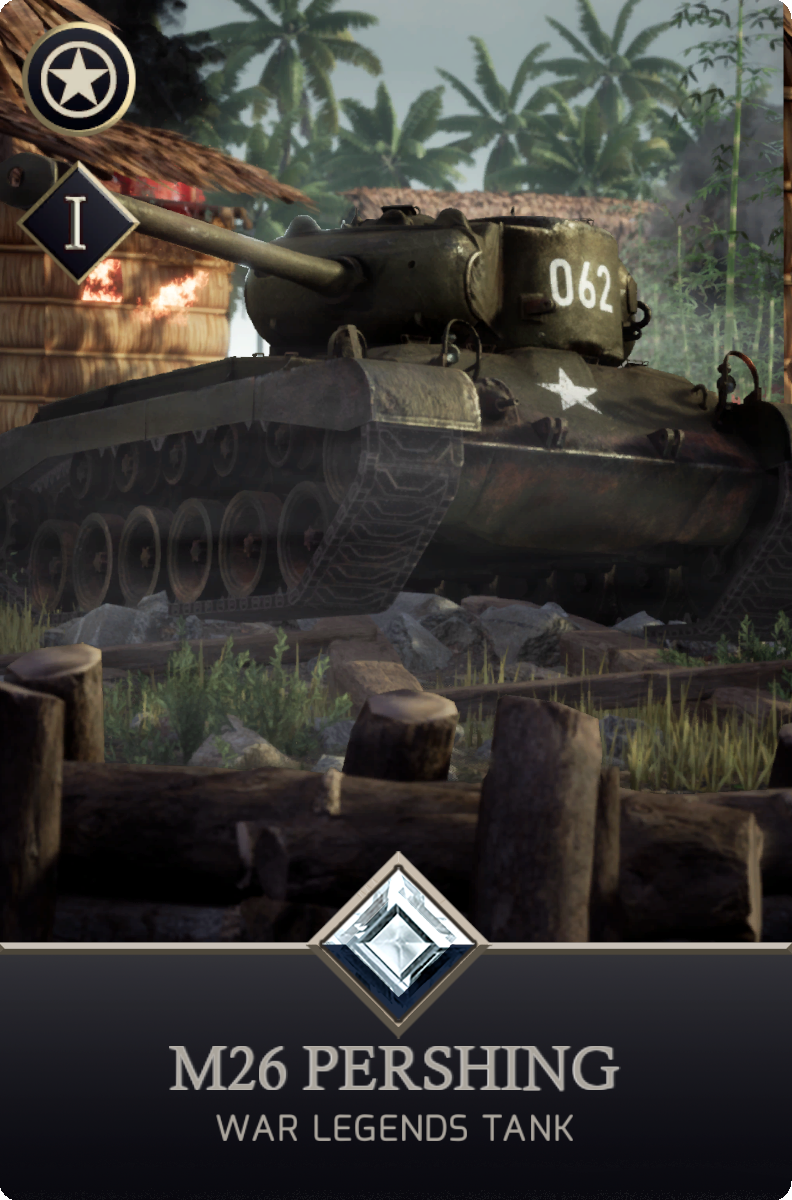


Tank Background
The Pershing was designed to take on large, powerful tanks such as the Panther and Tiger found in Europe.
The M26 Pershing was equipped with a high-velocity 90mm M3 gun and was protected by full 4.3-inch armor on the turret and front.
Plagued by delays, the first Pershings arrived in Europe in early 1945 and served in the US 1st Army. Although more than 300 were overseas by the end of the war, only the initial batch of 20 tanks saw combat.
The M26 and its derivative, the M46 Patton, had a larger presence during the Korean War. Originally designed as a heavy tank and later reassigned as a medium tank, the M26 outperformed the T-34-85 in terms of firepower and protection but lacked the necessary mobility and was mechanically unreliable, so it was withdrawn from Korea in favor of the M46, which was essentially the same vehicle but with a more powerful engine.
All the prototypes built suffered serious mechanical failures and the army did not want to risk its men being stranded in the middle of the battlefield because the tank had stopped working.
An evolution of this tank, the Super Pershing was sent to Europe and had its baptism of fire in the German city of Dessau on 21 April 1945 against a Tiger II, a clash in which the American tank came out the winner, although this combat has recently been demystified because it is supposed to have been propaganda, or it may also be due to the "Tigerphobia" of the Americans.








